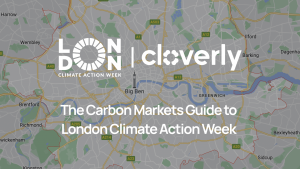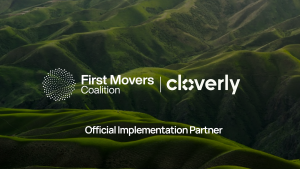Claims of Net Zero are rife with allegations of greenwashing and not doing enough to fight against climate change. The International Organization for Standardization recently launched the IWA 42:2022 standard for Net Zero for businesses at the COP27 in Egypt to bring uniformity. The standard lays down clear guidelines and recommendations to foster a common interpretation of Net Zero. It emphasizes the need to read the standard with existing science-based approaches for organizations to set robust climate action plans. You can download the complete document here.
Highlights of the IWA 42:2022 standard
- Definitions: the standard first sets out clear definitions of the different terms we use today: net zero, emissions, removals, credits, offsets, greenhouse gases, and so on.
- It recognizes the importance of reduction strategies in the decarbonization journey and the need to follow sector-specific science-based Net Zero pathways.
- It recommends setting targets to achieve Net Zero GHG emissions as early as possible.
- It also urges organizations that have more emissions (current and historical) or more capacity to be ambitious in their climate plans and focus on going beyond Net Zero.
- It advises against claiming avoided emissions (potential effect on greenhouse gas emission that occurs outside the organization’s boundaries but arising through the use of its products or services) as making progress towards reducing Scopes 1,2, and 3 emissions. For example, if you are an electric car maker, you cannot claim avoided emissions from fossil fuel that was not bought due to your cars being on the road towards your own reductions.
- It strongly recommends that every organization sets ambitious targets like reducing more than 50% of baseline emissions by 2030 or developing climate solutions to support other organizations and consumers in their decarbonization.
What does it say on carbon removals and offsets?
- The standard defines the withdrawal of GHGs from the atmosphere as a result of deliberate human activities as a removal, in line with the IPCC’s terms CDR or carbon dioxide removal. Types of removals include
- Afforestation
- Building with biomass (plant-based material used in construction)
- Direct air carbon capture and storage
- Habitat restoration
- Soil carbon capture
- Enhanced weathering (mixing soil with crushed rock)
- Bioenergy with carbon capture and storage.
You can view all removal projects on the Cloverly marketplace with a simple filter.
- For achieving Net Zero, residual emissions can be counterbalanced only using high-quality removals, either in the value chain (insetting) or beyond the value chain (removal-based offsets and credits). You can balance your residual emissions today with any removal project offered by Cloverly.
- Early investments in high-quality long-term removals are recommended by ISO since they help scale removal and storage capacity. Cloverly offers forward, offtake, and spot purchase agreements to support your ambitious climate goals.
- Offsets may be used as an option to achieve Net zero only after all avenues of reduction and decarbonization have been explored and executed by the organization. If you have to use offsets, you can only count the ones counterbalancing residual emissions towards your Net Zero target, and they cannot be used towards achieving interim milestones.
- The standard also recommends that organizations retire credits without using them as offsets as a way to contribute to the larger climate goals.
A standard like the IWA 42:2022 has been long awaited. It gives us a common baseline to compare efforts and a path we can follow to build our own climate strategies. ISO stepping in a new direction to set standards for climate approaches validates the need for every business to act on climate in the right way. The standard underscores the importance of investing in carbon removals today and going above and beyond offsetting carbon footprints. It even encourages businesses to strive towards achieving Net Zero even earlier than 2050 and contributing to climate disproportionately.
The role of carbon removals in the race to net zero and the larger goal of keeping 1.5 degrees of warming alive cannot be emphasized enough. If we all can look beyond just mitigating the negative impacts of our value chains and focus on funneling funds towards meaningful climate action like carbon removals and nature-based solutions that also enrich local communities, we will still have a chance of achieving global Net Zero. Please reach out to our team to understand how you can use high-quality carbon credits within the scope of the ISO IWA42:2022 mandate.





